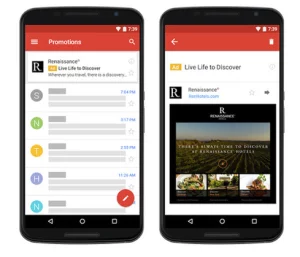Google AdSense

Google AdSense is an advertising program run by Google that allows website owners and content creators to monetize their online content by displaying ads. Advertisers bid to display their ads on the website, and Google selects the most relevant ads based on the website’s content and the visitor’s interests.
Website owners and content creators sign up for AdSense, and then Google provides them with a code to add to their websites. This code displays ads on the website, and when visitors click on the ads, the website owner earns a commission.
AdSense provides a way for website owners and content creators to generate revenue from their online content without having to sell advertising space directly to advertisers. Google manages the advertising inventory, selects the ads, and tracks the clicks and impressions, making the process simple and convenient for both the publisher and the advertiser.
However, to participate in the program, websites must meet certain eligibility criteria, and there are also guidelines and policies that must be followed to ensure compliance with Google’s advertising standards.
| Company Name: | Google AdSense |
| Payment Method: | Wire transfer, Check |
| Payment Frequency: | Net30 |
| Minimum Payment: | $100 or Є70 |
| Commission Type: | CPC, CPM |
AdSense Eligibility criteria
To be eligible for Google AdSense, a website must meet the following criteria:
- Content guidelines: The website must have high-quality and original content that provides value to users. The content must be unique and not copied from other websites or sources. The website must not contain any prohibited content, such as adult content, copyrighted material, or violent content.
- Traffic requirements: The website must have a significant amount of traffic from organic sources. While there is no specific minimum traffic requirement, it is recommended to have at least 100 unique visitors per day.
- Age requirement: The website must be at least 6 months old to be eligible for AdSense in some countries, such as India and China. However, in other countries, there is no such requirement.
- Website Ownership: The website must be owned by the applicant, and the applicant must have full control over the website’s content and design.
- Ad placement: The website must have enough space for ads to be displayed without being overcrowded or intrusive. The ads must be placed in compliance with Google’s ad placement policies.
- AdSense policies: The website must comply with Google’s AdSense policies and guidelines, including the program policies, content policies, and webmaster quality guidelines.
In addition to these criteria, Google also takes into account the website’s overall user experience, engagement, and ad performance when considering AdSense applications.
Ad formats
Google AdSense offers several ad formats to publishers to display on their websites. The ad formats include:
- Display Ads: These are image-based ads that can be displayed in various sizes on a website. They can be in the form of banners, rectangles, or squares.
- Native Ads: AdSense Native Ads are a type of ad format offered by Google AdSense that blends in with the design and style of the publisher’s website. These ads are designed to look like part of the website’s content, which makes them less intrusive and more engaging for users.
- Multiplex Ads (formerly Matched Content Ads): This is a recommendation tool that displays related content to the user. It can help increase engagement and page views.
- In-feed Ads: These are native ads that are integrated into a website’s content feed. They are designed to blend in with the website’s design and layout.
- In-article Ads: These are native ads that are placed within an article or a blog post. They are designed to match the article’s content and format.
- Video Ads: These are ads that are displayed before, during, or after a video on a website. They can be in various formats, such as skippable or non-skippable ads.
These ad formats allow publishers to choose the type of ads that best fit their website’s design and layout, as well as their audience’s preferences.
Adsense AMP Ads
AdSense AMP ads are a type of ad format offered by Google AdSense that is optimized for mobile devices and Accelerated Mobile Pages (AMP). AMP is an open-source initiative that aims to improve the performance and speed of mobile web pages.
AdSense AMP ads use a special type of code that is designed to load faster on mobile devices, providing a better user experience. These ads are also optimized for mobile screens, ensuring that they look good and fit well on smaller screens.
AdSense AMP ads can be either display ads or native ads. Display ads are image-based ads that can be displayed in various sizes on a website. They can be in the form of banners, rectangles, or squares. Native ads, on the other hand, are designed to blend in with the website’s content and layout.
AdSense AMP ads also come with additional features, such as the ability to load asynchronously, which means that they load separately from the content and do not affect the page’s loading speed. They also support a variety of ad sizes and formats, allowing publishers to choose the type of ad that best fits their website’s design and layout.
Overall, AdSense AMP ads are designed to provide a better user experience for mobile users while also helping publishers monetize their content. By optimizing the ads for mobile screens and improving their loading speed, AdSense AMP ads can help increase engagement and click-through rates, which can ultimately lead to higher revenue for publishers.








